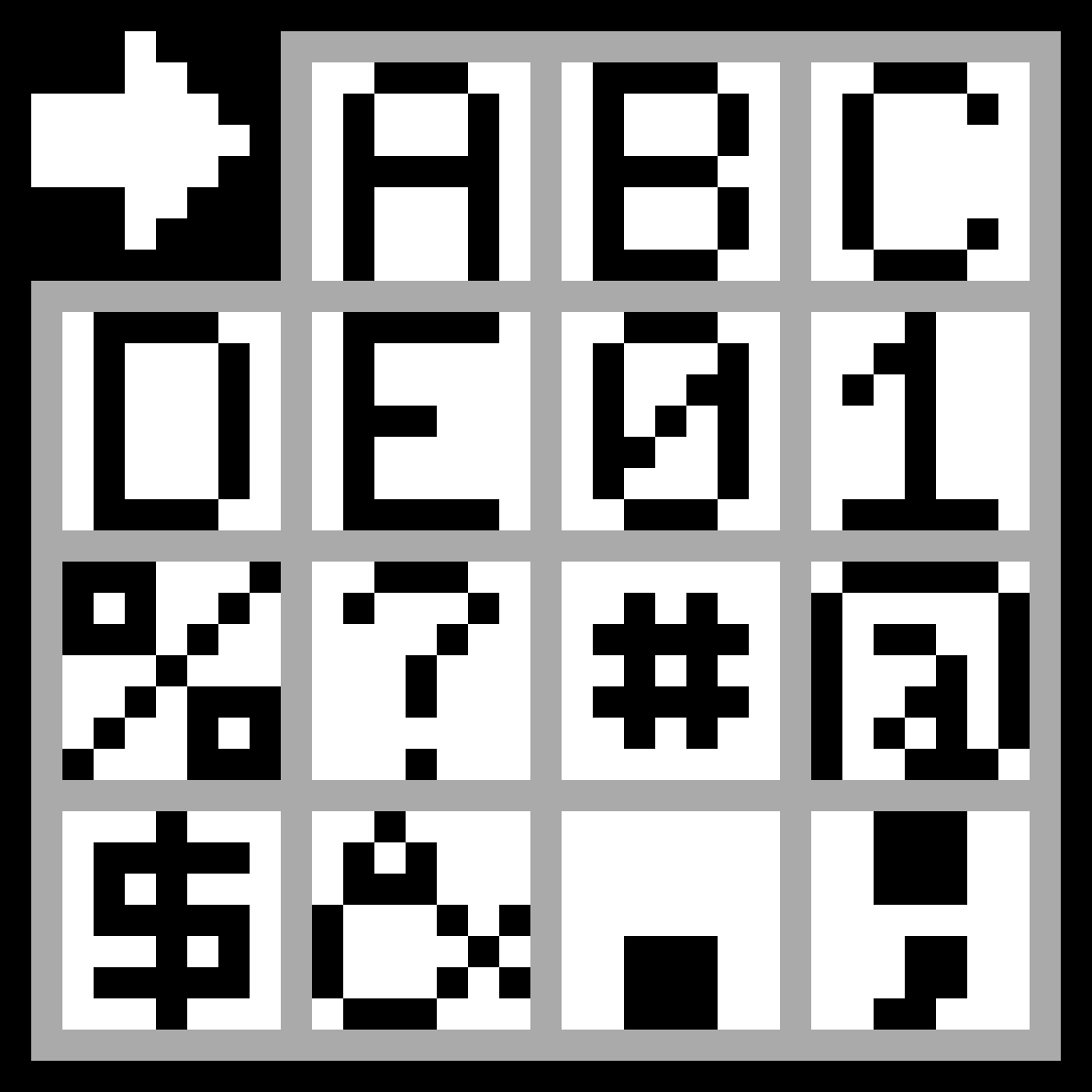Human Response Code: Designed to be recognized by humans and OCR. Encodes all valid URL characters to images.
QR codes has pros and cons as with everything else. While scanning a QR code is way convenient that typing a string on a phone, the fact that QR codes are not human readable has caused and will continue to cause security issues.
Rather than hoping that QR scanners are safe from malicious QR codes and they are taking their users consent before opening a webpage, let's create a human readable QR code alternative: HR code.
The most prevalent use case of QR codes is encoding URLs into images. For this purpose, HR code has the following advantages and disadvantages over QR code:
- Users could have an understanding of the data before taking the pain to scan it.
- More resistant to phishing attacks as the users could see the URL in print as well.
- Harder to interfere by painting black squares on a printed code and directing users to a similar, but malicious URL.
- Free to use in any way without attribution. Not protected by a trademark or license like QR code: https://www.qrcode.com/en/faq.html#patentH2Title
- Better looking than printer glitches.
- Unlikely to be adopted by default camera applications even decades later due to network effects.
- Larger size required for the same information and scanner quality.
- Harder recognition due to 1 corner block rather than 3 corner blocks as in QR code.
- Complex error correction implementations are required for client codes.
- HR Codes are rectangle images.
- HR Codes are surrounded by a border.
- HR code is read from left to right and from top to bottom, just as English.
- There must be an rightwards arrow on the top left.
- Each character occupies the same square size.
- Characters are separated by a constant size padding, which creates an uniform grid.
- All valid characters for URLs are also valid HR code characters.
- The complete list of characters is:
A-Z,a-z,0-9,-,.,_,~,:,/,?,#,[,],@,!,$,&,',(,),*,+,,,;,%, and=. - Updates in RFC 3986 (Uniform Resource Identifier (URI): Generic Syntax) could require HR code to support additional characters.
- Black for character strokes, the borders, the initial arrow background, and the padding between the initial arrow and the borders.
- White for character backgrounds and the initial arrow stroke.
- Light gray (
#aaa) for the padding between character backgrounds, which creates a gray grid. - Trailing empty character spaces, if any, are filled with light gray, not white.
- A text of
ncharacters should be placed into a square HR code with the following number of rows and columns:√(n+1)rounded up to the smallest integer.- For example, 100 characters should be placed into a square of 11x11 characters. since
10 < √101 <= 11.
- For example, 100 characters should be placed into a square of 11x11 characters. since
- Borders and grid paddings are 1 unit.
- Character backgrounds are 7 x 7 units.
- If
ais the number of rows, andbis the number of columns, the rendered image is8a+3units tall and8b+3units wide, considering the borders and paddings.
The following characters generate the HR code below them:
➡️ABC
DE01
%?#@
$&.;
This image is 35 units tall and wide.
The HR code above is the rendering of this url in the format below:
➡️https
://git
hub.co
m/hant
uzun/h
r-code
This image is 51 units tall and wide.
The HN post of this repo is https://news.ycombinator.com/item?id=21418882

Below are my comments from the thread above:
This is just a PoC of an idea I've created after reading https://news.ycombinator.com/item?id=21417026. But who knows, a human readable QR code alternative could born out of this.
When I looked up for this idea, I have found out http://hrqr.org/ but didn't find it much readable. Thanks to the comments here I came across OCR-A, OCR-B, and MICR just now. From these I've found Westminster typeface: http://luc.devroye.org/fonts-48273.html
Do you guys think using a font inspired by Westminster be a better choice than the prototype we have now?
In any case, the font should be resistant to malicious tampering such as creating an "o" from "c". Manual tampering could be also prevented with trailing checksum images that could be more information dense than the characters.
Error correction concern is the most common among the HN comments. Yes, HR code readers would need to have error correction implementations to be reliable. Since each 7x7 grid of 2^49 binary options could only encode one of the 85 valid characters, HR codes could be recognized with even large chunks missing. On the other hand, implementations would be much more complex than the QR code error correction algorithm.
I reduced 3 corner blocks of QR codes to 1. This would make detection of HR codes much harder.
OCR, image recognition from video feed and average phone camera and processor has advanced so much in the past years that I think these technical costs could be favored for a human readable QR code alternative.
If the app you are using to scan the QR code doesn't ask you for permission before opening the web page that's the problem with the app not the QR code... (wfdctrl's comment)
You're right. If the protocol is not secure enough, then the layer above must be secured enough. But it's better to have the security at the protocol level.
Obviously QR codes should bring security concerns. First, QR code readers are required to ask for permission to open URLs. They might as well not implement it or could have malicious codes for misrepresenting the URL in specific cases. Second, I wouldn't be surprised to see some bugs exploited in QR code scanning code by giving them strange codes to scan. These would not look like valid HR codes but would look like just another QR code.
I'm open for a better name than "HR code".

To the extent possible under law,
Han Tuzun
has waived all copyright and related or neighboring rights to
HR code.

